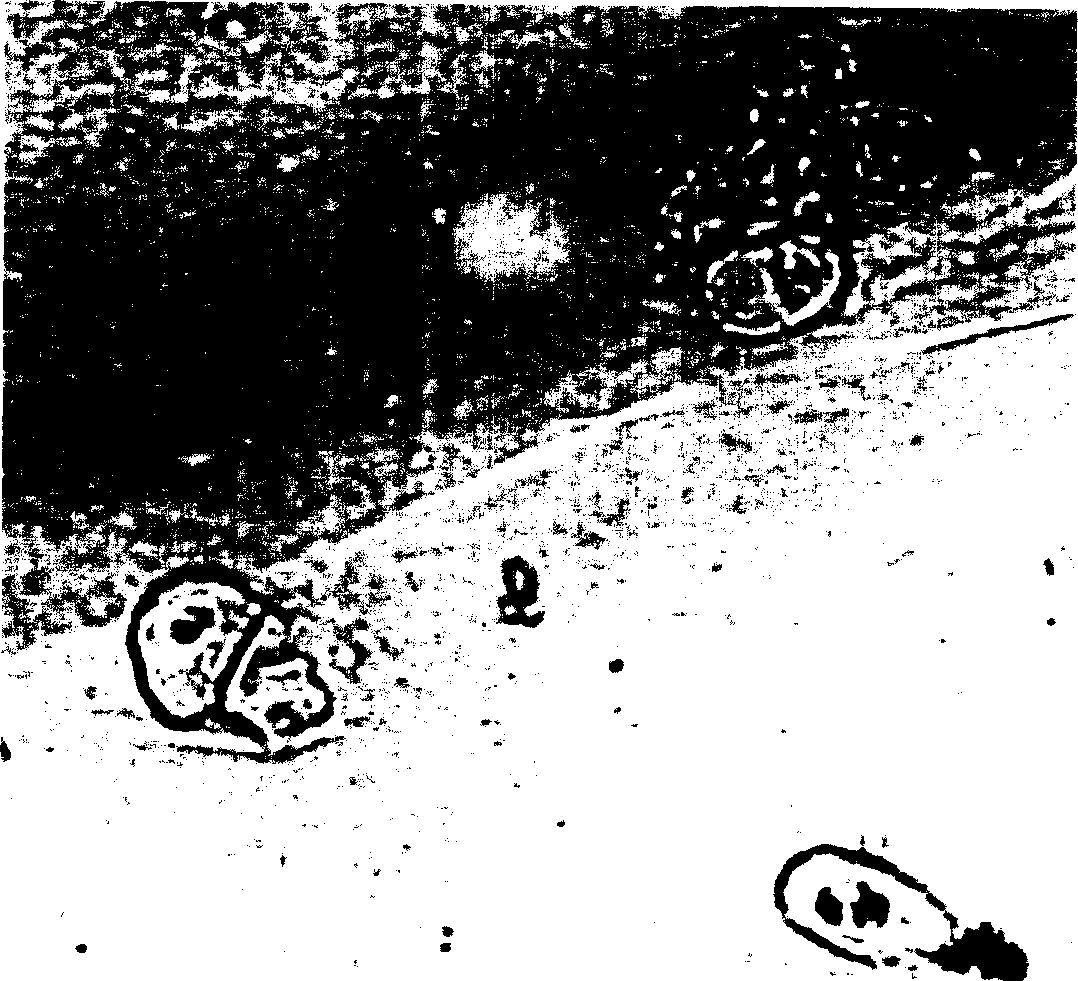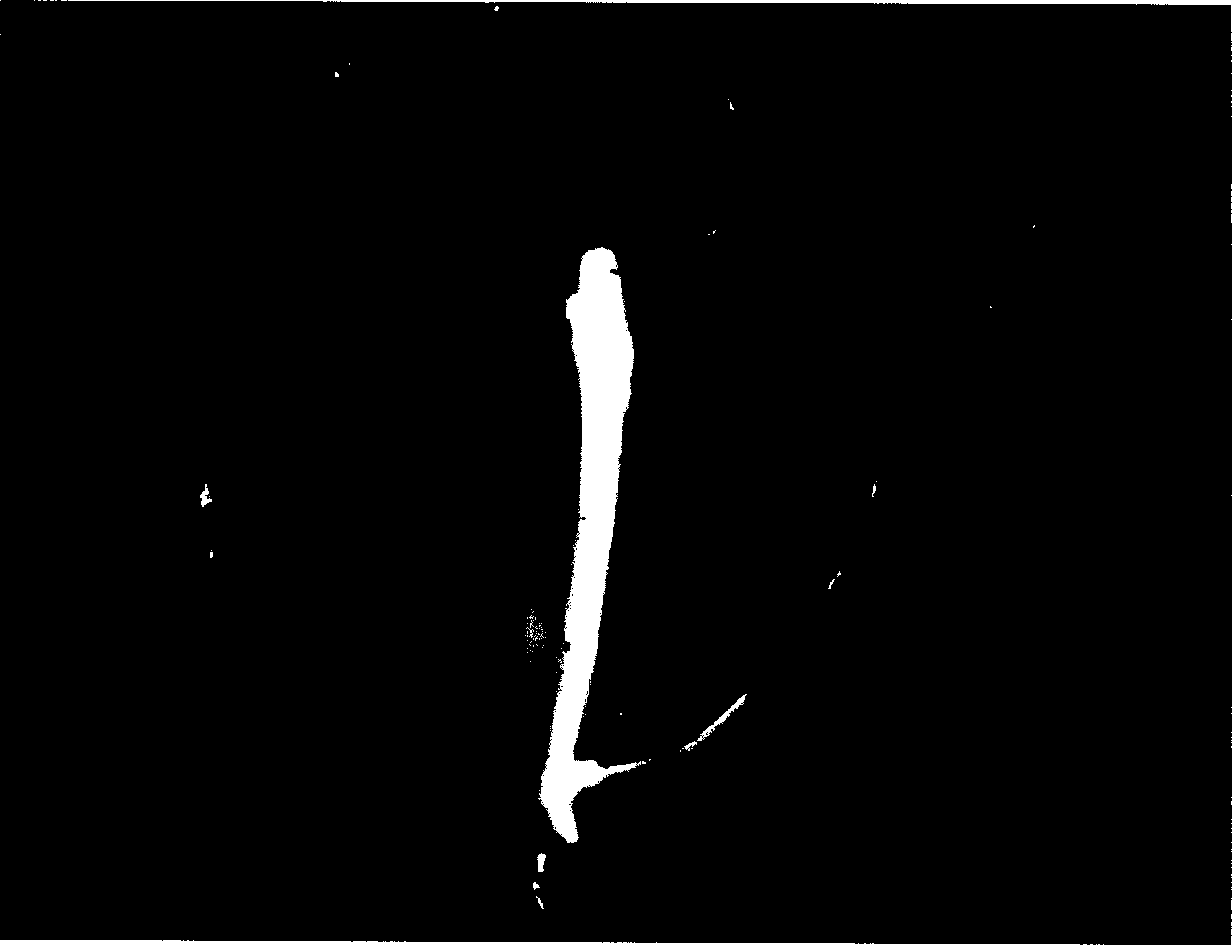Stem cell regenerating surface cornea and its application in corneal transplantation
A stem cell and superficial technology, applied in the field of stem cell regeneration superficial cornea and its application in corneal transplantation, can solve the problems of limited number of stem cells, few treatment opportunities, lack of stem cells, etc., to ensure long-term effectiveness, rich sources, and immune rejection light effect
- Summary
- Abstract
- Description
- Claims
- Application Information
AI Technical Summary
Problems solved by technology
Method used
Image
Examples
Embodiment 1
[0026] Take the whole corneal epithelium from the eyes of aborted fetuses at 13 weeks of embryonic age, cut it into pieces, digest with 3ML 0.1% trypsin + 0.02% EDTA for 15 minutes, stop the digestion with the same amount of DMEM + 10% fetal bovine serum, and centrifuge at 1500RPM After 10 minutes, add culture medium to prepare single cell suspension, put 1.5ML single cell suspension in 35MM plastic Petri dish, add culture medium in 5% CO 2 , Culture at 37°C.
[0027] Medium composition: DMEM:F12=1:1, 10% fetal bovine serum, epidermal growth factor EGF (10ng / ml), basic fibroblast growth factor bFGF (20ng / ml), insulin (5ug / ml), transfection Ferritin (5ug / ml), triiodothyronine (2nM), glutamine 4mM, sodium selenate 5ug / ml.
[0028] Culture process: the culture medium is changed once every 2 days, and the cells of the 20th day are passaged when the cell confluence reaches 80-90%. On the treated amniotic membrane, after 14 days of culture under the same culture conditions, stem c...
Embodiment 2
[0031] The limbal epithelium of a 65-year-old male patient who underwent enucleation of the left eye due to left eye absolute glaucoma was immediately cut up and digested with 0.1% trypsin + 0.02% EDTA for 40 minutes. % fetal calf serum to stop the digestion, centrifuge at 1200RPM for 10 minutes, add the following medium to make a single cell suspension, transfer 1.5ML single cell suspension into a 35MM plastic culture dish and add the medium for culture. The culture condition is 5% CO 2 , 37°C.
[0032]Medium composition: DMEM:F12=3:1, 10% fetal calf serum, epidermal growth factor EGF (20ng / ml), basic fibroblast growth factor bFGF (10ng / ml), insulin (10ug / ml), transfection Ferritin (10ug / ml), triiodothyronine (1nM), glutamine 8mM.
[0033] Culture process: the cultured cells were changed every 3 days, passaged when the cells reached 80-90% on the 22nd day, the second generation was passed on the next 9 days, the third generation was passed on the next 8 days, and the third ...
Embodiment 3
[0037] Immediately after enucleation of the left eye of a 10-year-old male patient due to trauma, the limbal epithelium was harvested. The epithelium was cut into pieces and digested with 0.1% trypsin for 70 minutes. The digestion was terminated with an equivalent amount of 10% fetal bovine serum, and centrifuged at 1200RPM for 10 minutes. Minutes, add the following medium to make a single-cell suspension, and transfer 1.5ml of the single-cell suspension into a 35MM plastic culture dish for culture. The culture condition is 5% CO 2 , 37°C.
[0038] Culture medium composition: the culture medium includes: DMEM:Ham's F12 ratio 2:1, 10% fetal bovine serum, epidermal growth factor EGF15ng / ml.
[0039] Culture process: the medium of the cultured cells is changed every 1 day, and the cells of the 25th day are passaged when the confluence reaches 80-90%, the second generation is passed on the next 8 days, the third generation is passed on the next 7 days, and the third generation ce...
PUM
 Login to View More
Login to View More Abstract
Description
Claims
Application Information
 Login to View More
Login to View More - R&D
- Intellectual Property
- Life Sciences
- Materials
- Tech Scout
- Unparalleled Data Quality
- Higher Quality Content
- 60% Fewer Hallucinations
Browse by: Latest US Patents, China's latest patents, Technical Efficacy Thesaurus, Application Domain, Technology Topic, Popular Technical Reports.
© 2025 PatSnap. All rights reserved.Legal|Privacy policy|Modern Slavery Act Transparency Statement|Sitemap|About US| Contact US: help@patsnap.com



